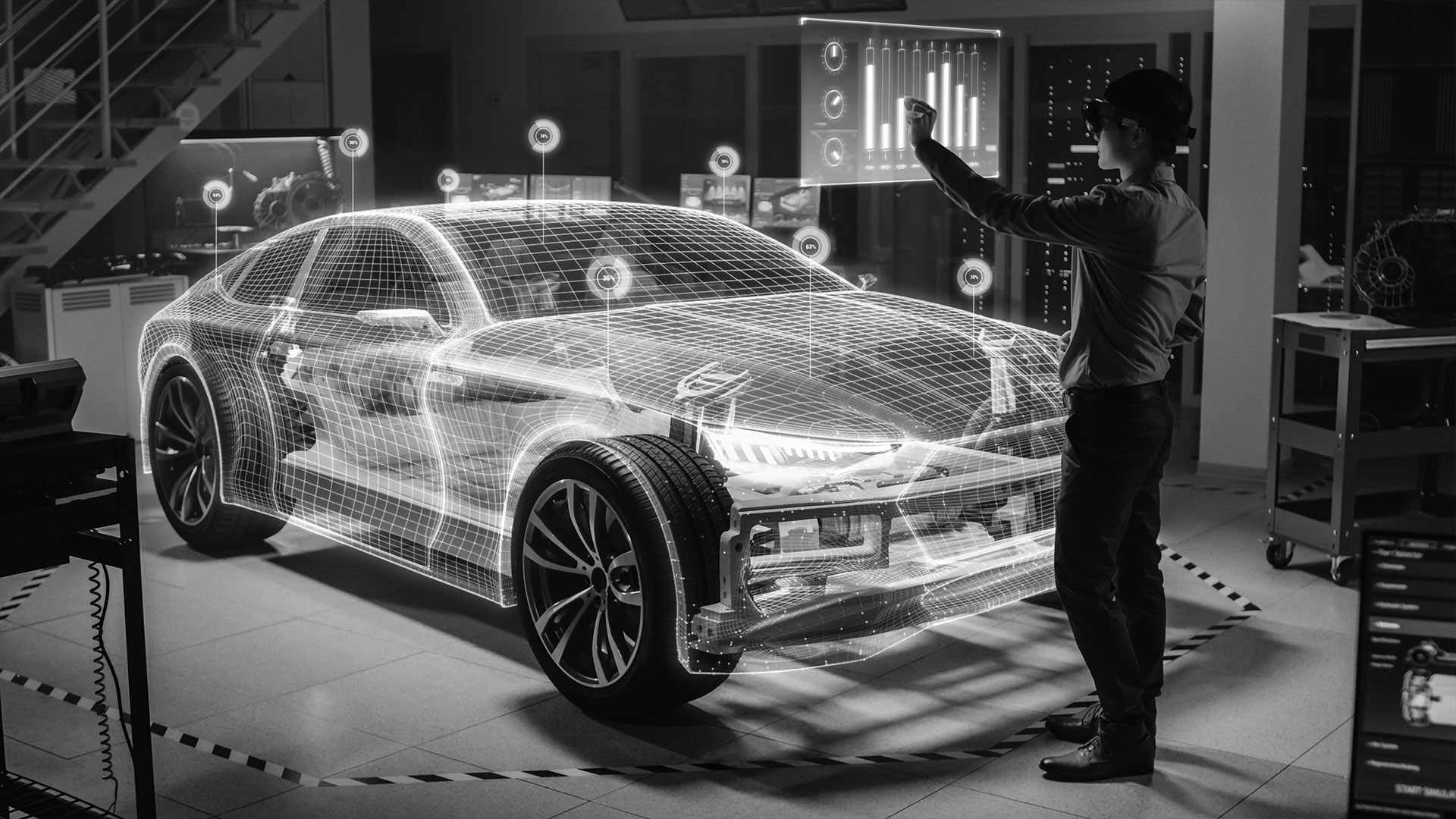The automotive industry is at the heart of a momentous digital transformation in production and accessories. In fact, because of its deep changes, automotive is one of the emerging tech markets for this year and beyond. Digital essentials are reshaping the customer experience and the automotive market. In fact, the customer’s desire for advanced automotive experiences and ever-growing technology are driving the automotive digital transformation. There are a multitude of technological advancements on the horizon which offer a better customer experience, operational adjustments, and more. The industry has even implemented technologies which aid car owners and the industry with prompt maintenance, measure emissions, and costs. Many of these technologies are driving competition among the big automakers as well.
Digital Trends for Automotive
Electronic, eco-friendly vehicles are the tip of the iceberg in terms of automotive digital transformation. There is considerable demand for more customisable, software-enabled vehicles shaping the modern auto industry and transitioning vehicles from an asset to a service or experience. Among these trends are autonomous (self-driving) vehicles, environmental compliance, intelligent components and communication systems, increased efficiency and reduced maintenance costs.
The automotive industry also must make room for cybersecurity accommodations as the potential for cyber-attacks on a vehicle network grows with additional technology and data storage. Cybersecurity is also a priority for software related capabilities associated with fleet management. Used by many in the shipping and transportation industries, fleet management is important for safety and can decrease risk of liability when properly managed. Likewise, many local and regional governments are turning to intelligent transportation programs to achieve convenient, efficient, and safer transportation. It is important to ensure operations of fleet and transportation networks are as intended and protect these systems from potential interference and hacking.
Many of these digital technologies are being implemented for, or resulting in, increased productivity and quality for auto manufacturers and retailers. Manufacturers and automotive dealers have also had to implement eCommerce within their ranks. The automotive industry deals with similar issues as other online retailers, but it is important to overcome these issues as buyers are more likely to look online first even when buying in person. It is also important to note that auto makers outsource many of the technologies in use or form joint ventures with smaller technology firms, such as TechTeamz, and start-ups.
Breakdown of the top trends in automotive digital transformation
Technology and trends are often implemented to meet customer demands and provide them with a remarkable customer experience. Let’s breakdown some top trends and new technologies being implemented to achieve satisfaction and get a larger market share in the industry.
Autonomous vehicles
Autonomous cars provide many hoping accidents and speeding tickets will be a thing of the past. While there is likely a lot of development necessary for that to become a reality, developments expanding in use or underway include robotaxis, and driver monitoring through AI. Robotaxis were being seen and growing in some locations a few years ago. While there was a slow in their popularity during the pandemic, all signs seem to indicate autonomous taxis and ride sharing will again be on the rise in coming years. AI in automobiles has been growing over the past several years, making automobiles safer. Not only can AI sense other vehicles and applying the brakes or keeping the vehicle centred in the driving lane, but some auto manufactures are implementing cameras which scan the driver’s face for signs of fatigue, a key contributor to accidents.
Digital tools
Technology is being consistently developed and improved to provide new, and improve existing, functionality, safety and driver tools. Many manufacturers have included, and are constantly improving, human-machine interfaces in automobiles such as AI virtual assistants, access to smart tools and apps, virtual displays for improved visibility, theft prevention, vehicle tracking, emergency help, improved navigation systems, and other travel information. Other customer engagement feedback is resulting in interfaces like infotainment, which moves with the driver and other ideas driving progress and value. Using various technologies which can track and even reduce emissions has become more and more popular with consumer concerns around emissions. Other important technology to optimise the driving experience, provide telematics, driving prediction services, and wireless updates for the software, making the technology possible and protecting automobiles from hackers will continue to grow in the coming years.
Intelligent transportation
Intelligent transportation, or road telematics, have been developed over the last 20 years and some applications are commonly known. These include on-board navigation systems, which provide real-time travel and traffic information. Unfortunately, many of these intelligent transportation concepts are limited to certain regions or vehicles. These technologies, implemented in an EU wide fashion, can enhance transportation, and even provide continuous cross-border services. Traffic management and travel information cannot be provided across borders when Member States don’t work together. It is also predicted that a joint effort will show economic benefits, as well as potential for reduced road congestion and safer driving conditions. Traffic informatics are also increasingly important for meeting transportation policy and linking the modes of transportation.
Safety features
There are many driver assistance and onboard safety enhancements through technology in recent years. Road fatalities in the EU while decreasing, are still over 40,000 annually. The auto industry and consumer suggestions continue to implement and develop new systems, which can further enhance automotive safety, and will hopefully continue to reduce fatalities. These technologies and tools are also resulting in a more comfortable, enhanced driving experience. Several such tools include emergency notification in the event of an accident, automated driving, and electronic stability controls.
The consumer-driven automotive digital transformation continues to grow and shows little sign of slowing. With increased customer expectations and safety requirements, it is no surprise the market continues to grow and flourish. The automotive technology boon has also brought opportunities for digital technology professionals. TechTeamz can provide digital professionals and software engineers for automotive technology products. If you are an experienced professional interested in automotive technology and trends or other exciting projects, reach out and we’ll see if you’re a fit for one of our teams.






